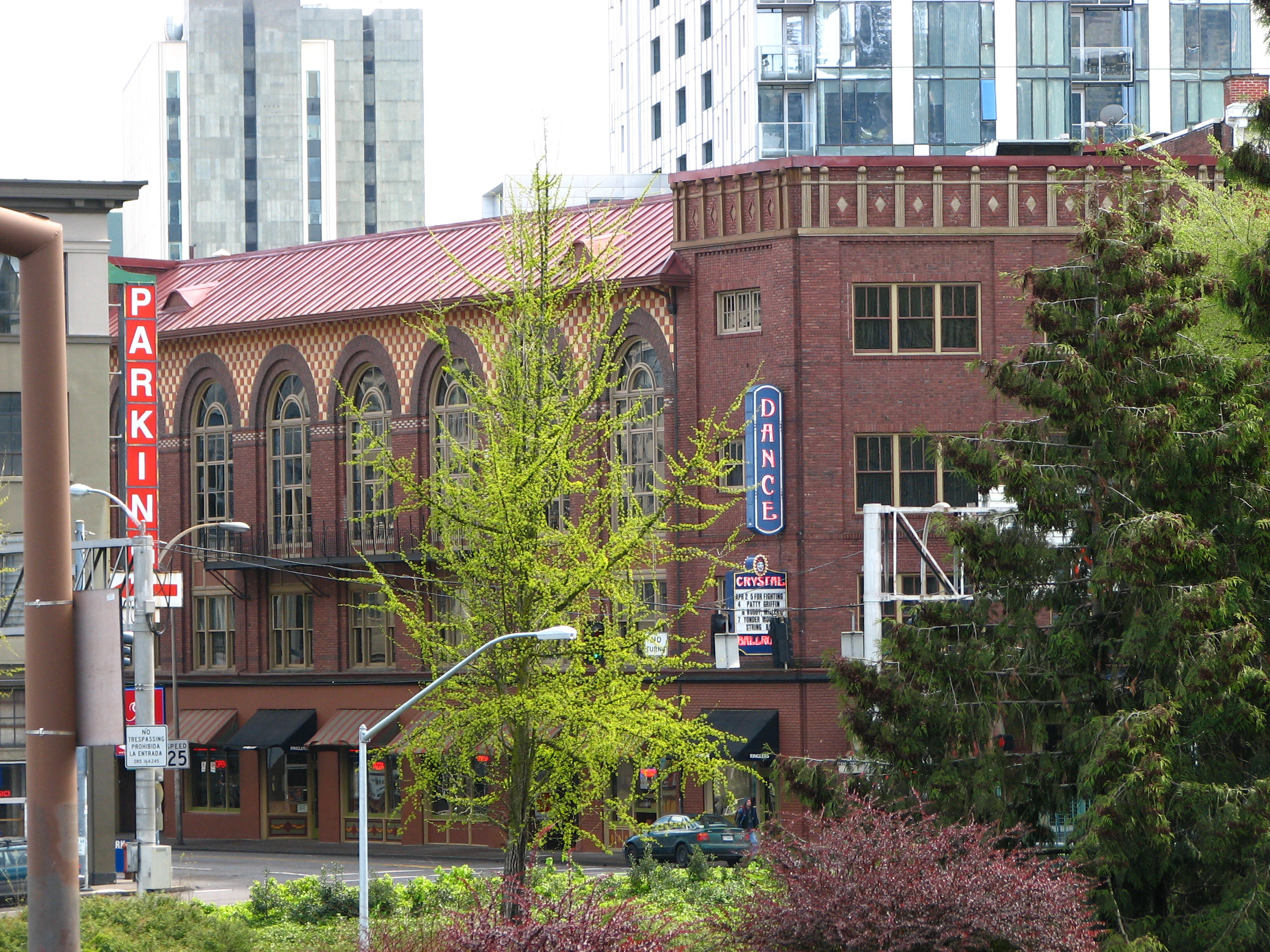 |
| Failing Bridge looking west |
Good morning, friends. Welcome to another Rose City Wednesday—it’s cool & soggy here; hope things are good in your world!
Today’s post takes us back to my neighborhood & will give you a look at one of the fun & interesting features in these parts. It’s known as the Failing Bridge or Failing Pedestrian Bridge locally, tho officially it’s called the N Failing Street Overcrossing (that’s “N” as in “North” of course.)
The Failing Bridge connects the Boise or Boise-Eliot neighborhood (which is my side of the tracks) to the Overlook neighborhood to the west. These neighborhoods are divided by the Interstate-5 freeway, which runs right thru North Portland. There are other overpasses with sidewalks that carry cars as well as pedestrians & bikes, but the Failing Bridge is dedicated to just foot & bicycle traffic.
 |
| View of the Overlook Neighborhood from the west side of the bridge-that's the Yellow Line train on Interstate Ave |
While the Boise neighborhood is especially known for the Mississippi District along N Mississippi Ave, Overlook has the bustling four-lane N Interstate Avenue with a number of stores & other businesses; the Trimet MAX Light Rail Yellow Line also runs right up the center of Interstate from the Rose Quarter Transit Center at the very southeastern corner of North Portland, up North to the Expo Center, which is close to the shores of the Columbia River near the Vanport Wetlands (for Vancouver/Portland.) Since the Yellow line begins downtown at Portland State University, this is a major line connecting west & north Portland, & thus the pedestrian bridge is a great convenience.
Now while the idea of a foot & bike bridge might seem new0fangled & a product of our consciousness these days that it’s good to have ways of getting around that don’t involve automobiles when possible, in fact the Failing Bridge dates back to 1963, which was almost the peak of U.S. car culture—the days of the Eisenhower interstate system & V-8s, when the Detroit auto manufacturers were in a boom & gasoline seemed inexhaustible (so to speak), unproblematic & cheap. But some forward thinking people in Portland saw the need for this pedestrian crossings as the East Bank Freeway, which later became I-5, began to move thru North Portland, & federal funding for the interstate construction included money for two such bridges—the one at Failing & another one further north at N Bryant.
 |
| I-5 passing under the Failing Bridge |
The Failing Bridge has not been without problems & controversy. It was closed in 1991 because there were concerns that criminals from the Boise neighborhood were using it as an escape route from the Overlook neighborhood. Throughout the 1990s, the structures fate hung in the balance, with some arguing for its demolition & others for its restoration.
By 1999, the crime rates in North Portland had dropped significantly, & the MAX Yellow line was also slated to connect the North to downtown; as a result, the voices that argued for restoration won the day &, complete with ADA ramps for wheelchairs (& also bikes & folks like me who don’t do well on steep stairways), the Failing Bridge re-opened in 2003.
 |
| Josiah Failing plaque on the structure's eastern wall |
OK: I know your question—why “Failing”—& I know that saying it’s for “Failing Street” is not a sufficient answer! Josiah Failing was Portland’s fourth mayor, a native New Yorker who fulfilled a long-held dream & moved to Oregon Territory (as it was then called, still seven years before Oregon statehood) in 1851. A successful businessman, Failing was elected mayor in 1853; one of his big projects while in office was the establishment of public schools. He served as a delegate to the 1864 Republican National Convention that nominated Abraham Lincoln for a second-term & also to the 1868 convention that nominated Ulysses S. Grant.
& now you know the story of Failing Bridge!
 |
| Official sign/official name at the intersection of N Mississippi & Failing |

























